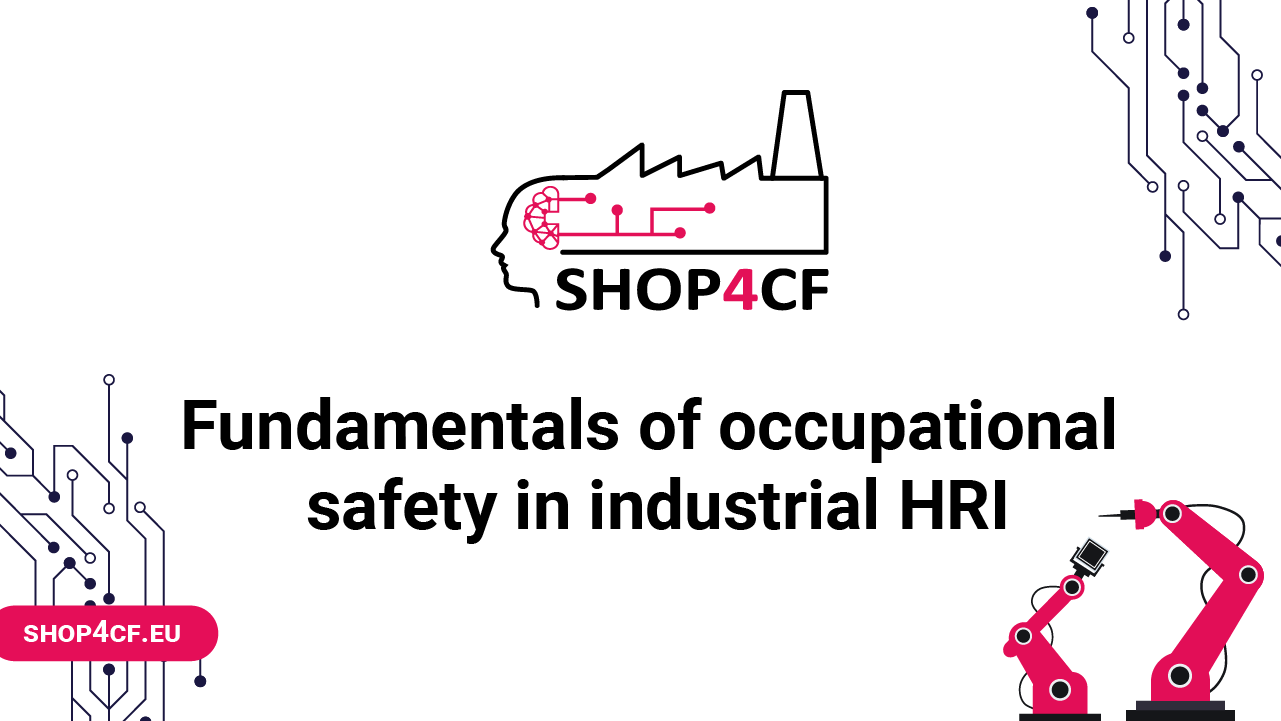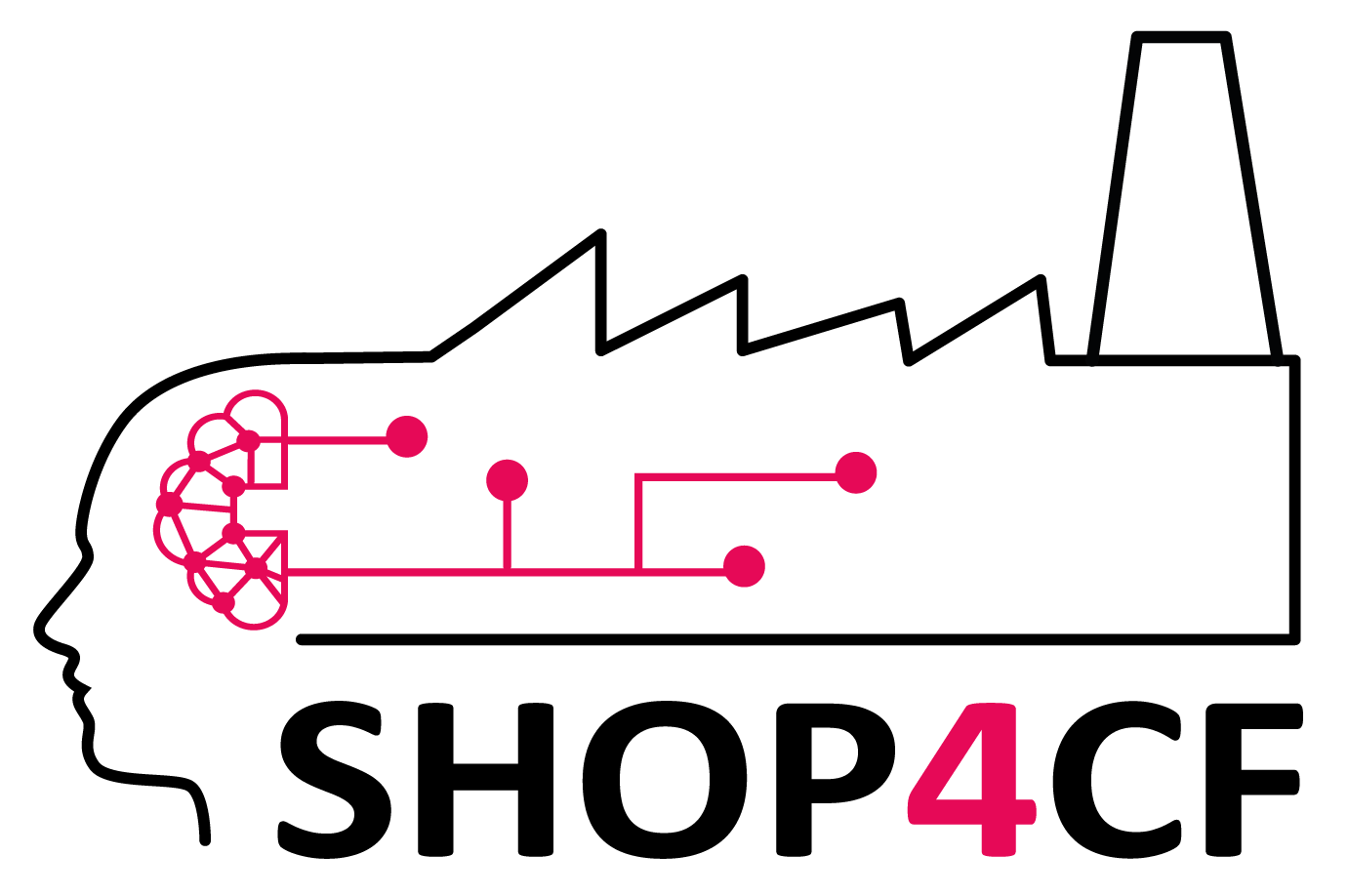Fundamentals of Occupational Safety in Industrial Human-Robot Interaction
SHOP4CF

About This Course
Collaborative robotics is one of the keys and enabling technology of Industry 4.0. When introducing human-robot interaction in manufacturing systems, a crucial part will be safety. In fact, the main difference between collaborative and “traditional” industrial robotics is that the former are designed to allow physical human-robot interaction in hybrid and fenceless work cells without the necessity of isolating the robot workspace. Traditional industrial robots were introduced to improve production efficiency by replacing human operators in performing heavy, unsafe, and repetitive processes. Due to safety requirements, a traditional, high-performance manipulator needs safeguards (i.e. physical barriers or optical devices) to isolate the robot activities and therefore to safeguard operators from non-functional (unexpected/unwanted) contacts. Since collaborative applications allow for human-robot interaction and this is even required in some conditions, traditional safety solutions for robotic system isolation are, in general, no longer possible. This course will focus on the key concepts related to occupational safety in industrial human-robot interaction, particularly focusing on mechanical risks. Since this topic is crucial for both operator’s health and wellbeing as well as for the company’s performance, managers and technicians should have a clear understanding of the main challenges related to the design and management of safe collaborative systems, especially in small and medium-sized enterprises.
The course will be divided into four sequential modules. The first module will be entitled “Introduction to industrial collaborative robotics”. This part will be necessary to introduce some key concepts that will be the basis for the further understanding of the role of safety in human-robot interaction. The relationship between Industry 4.0, cyber-physical systems, and collaborative robots will be explained. The main advantages of such technology will be discussed. The four forms of human-robot interaction in industrial settings will be introduced according to the required level of physical interaction, expected collaboration and, occupational health and safety requirements. An example will be presented for each of these modalities to clarify how they can be implemented on the shop floor. Finally, the workspaces in collaborative applications will be defined.
The second module will be entitled “Occupational safety in industrial collaborative robotics”. The basic concepts and definitions of occupational health and safety will be introduced. The role of safety deliverables (standards, technical specifications, technical reports) will be clarified and contextualized in the field of safety of machinery and industrial collaborative robotics. The technical specification ISO TS 15066 will be introduced as the reference document for mechanical risk assessment. The key concept of “collaborative application” will be discussed in comparison to the concept of collaborative robot. The process of risk assessment will be mentioned as the main tool for risk analysis, prevention, and mitigation. Furthermore, the foundations about mechanical hazards (possibility of being crushed, trapped, impacted, etc.) in the case of non-functional human-robot contacts will be explained. The main differences between “traditional” and collaborative robotic systems will be discussed from the safety perspective. The hybrid method for risk assessment will be explained, also providing some examples. Finally, the bottom-up and top-down approaches for safety management will be discussed to also consider the operator’s personal experience and suggestions.
The third module will be entitled “Modeling human-robot contacts”. The “safety by design” approach will be introduced, also discussing the three-step methodology provided by ISO 12100. The biomechanics of the contacts between the different human body parts and the components of the robotic systems will be introduced by using the model presented in ISO TS 15066. The principle of acceptable and unacceptable regions for force or pressure will be discussed. The human-body model and the concept of human “pain” associated with maximum exposure to force or pressure will be clarified. The two main phases of the collision will be described. The dynamics of quasi-static and transient contacts will be discussed and compared according to the pressure or force distribution over time. The four main types of human-robot contacts will be classified and explained.
The fourth module will be entitled “The collaborative safety modalities“. The four modalities for a safe human-robot interaction in industrial settings (safety-rated monitored stop, hand guiding, power and force limiting, speed and separation monitoring) will be introduced according to the definitions of ISO TS 15066. A detailed description of the “power and force limiting” and “speed and separation monitoring” modality will be provided. The hardware and software design solution that allows a collaborative robot to detect and properly manage contacts are discussed. The main technical and organizational measures for the mitigation of potential mechanical risks will be mentioned by considering the overall collaborative application.
Contents
The principles and main definitions about industrial human-robot interaction;
The key concepts behind the use of standards and deliverables in occupational health and safety of machinery;
The fundamentals of mechanical risk in industrial traditional and collaborative robotics and the concept of risk assessment;
The main differences between “traditional” and collaborative industrial robotic systems from a safety perspective;
The difference between “collaborative application” and “collaborative robot”;
The role of ISO TS 15066 in the design of safe collaborative applications;
The biomechanical model of human-robot contacts and related dynamics;
The four safety modalities according to ISO TS 15066;
Goals
-

Understand the key role of occupational safety and related safety deliverables in industrial human-robot interaction;

Be able to preliminary identify the mechanical hazards associated with collaborative applications;

Be able to differentiate “traditional” and collaborative industrial robots from the point of view of the mechanical risks;

Understand the nature of contacts between different parts of the human body and the collaborative robotic systems;

Understand the main differences between the four safety modalities and related applications;
Course staff
-
<>
-
Dr. Luca Gualtieri
/I. Overview/ I am responsible for research in industrial collaborative robotics. I am focusing on human-robot interaction from the point of view of the operator's occupational health and safety, ergonomics and shared workplace organization. LinkedIn:https://www.linkedin.com/in/luca-gualtieri-54b221106/
Frequently Asked Questions
What web browser should I use?
The Open edX platform works best with current versions of Chrome, Edge, Firefox, Internet Explorer, or Safari.
See our list of supported browsers for the most up-to-date information.

